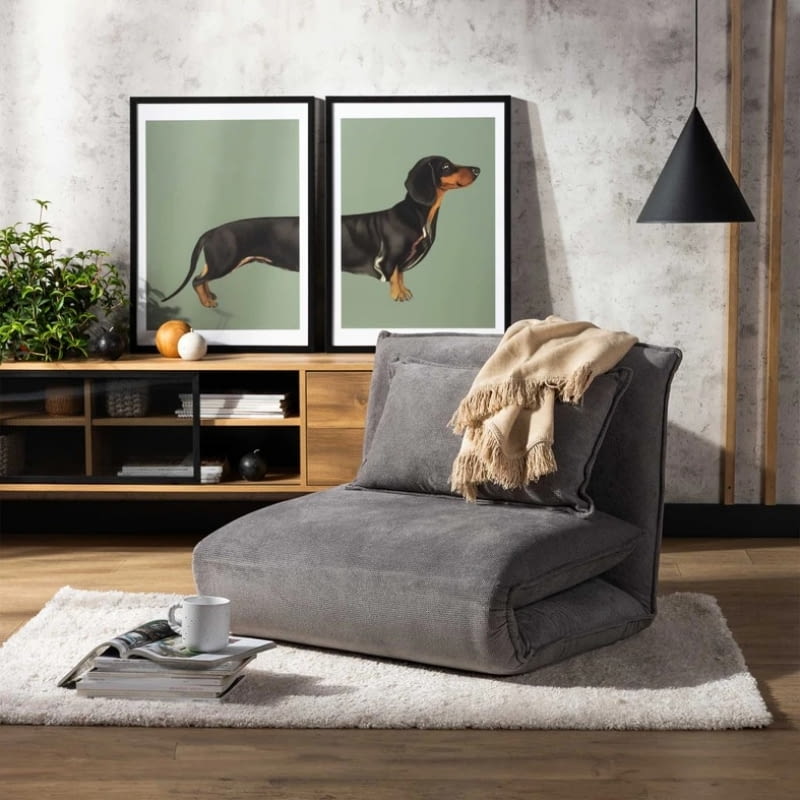
Small furniture, great possibilities
In the era of changing arrangement trends and the need to optimize space, small furniture is gaining importance, becoming a functional and aesthetic complement to interiors. Their role is not limited to saving space – are intelligently designed pieces of equipment that prove that size does not have to determine usability. Furniture with compact dimensions and great functionality can surprise with the possibilities they offer, meeting the needs of both singles living in studio apartments and families arranging a children’s room or home office.
Contemporary interior design is increasingly focusing on skillful management of – space not only due to its limited size, but also due to its aesthetics and the growing need to maintain order and transparency in the home environment. Small furniture that does not overwhelm the interior and at the same time fulfills many functions is the answer to this need. This is an expression of a practical approach to everyday life in which “less is more” – but only when every centimeter is thought out.
Smart solutions for small spaces
In apartments with a small area, everyone square meter it can be worth its weight in gold. In such conditions, small furniture serves not only a functional but also an organizational function, creating an orderly space, but also a comfortable and stylish one. A coffee table with a hidden compartment, a pouffe with a blanket container, a shallow console for the hall or a – corner shelf are just some of the examples of furniture that can optimally use even the most non-obvious nooks and crannies.
It’s not just about reducing the size of –, their functionality is equally important. Contemporary furniture is designed with maximum usability in mind: cabinets with sliding doors, desks with a retractable top or benches with storage space. A well-selected, small piece of furniture can play a decorative and practical role at the same time, harmoniously fitting into the space and giving it an individual character.
Multifunctionality as the key to a modern interior
One of the most fascinating trends in furniture design is its multifunctionality. While many people work from home and apartments function as an office, exercise room, dining room and bedroom at the same time, it becomes impractical to clearly assign space to a specific activity. Multifunctional furniture “comes out” to meet this new reality, offering flexibility and freedom of arrangement.
Sofas that become a comfortable bed for guests in an instant, tables that transform from a coffee position into a full-size dining table, shelves that, after assembling one of the shelves, turn into a place to work – are just some of the examples of clever structures that make everyday life easier. Designers are constantly looking for new ways to ensure that one block can perform two or more functions, minimizing the need to have many separate furniture.
Advantages of foldable furniture
Among the most practical solutions for small apartments, fold-out furniture deserves special attention. Their greatest advantage is the ability to adapt to the changing needs of –, depending on the situation, the furniture can be compact and discreet, and when necessary, transform into a full-size piece of equipment.
Folding sofas and corners are a classic of the genre, but more and more often you can also find fold-out desks, seats and even beds hidden in the wardrobe, which, when folded, reveal space for shelves or a worktop. Such solutions are particularly appreciated in micro apartments and – shared spaces, such as dormitories or children’s rooms. It is worth noting that the technology of unfolding mechanisms has developed significantly in recent years. Today, furniture of this type is not only solid, but also intuitive to use and aesthetic, without visible fittings or unnatural joints.
Every room has its potential
In the living room, it is worth choosing furniture that combines representative and practical functions. A fold-out table that serves as an auxiliary table on a daily basis can accommodate several people with a shared meal if necessary. Modular shelves hung on the wall, instead of a traditional shelf, allow you to maintain the visual lightness of the interior. By choosing a sofa with a container and a sleeping function, we gain both space for storage and comfortable accommodation for guests.
Beds with drawers or a frame lifting mechanism will work well in the bedroom, especially in a very limited size. High chests of drawers, post cabinets will accommodate clothing and accessories without taking up much space. If the bedroom also serves as a study, it is worth considering a desk in the form of a foldable countertop attached to the wall, which almost disappears from view after the work is completed.
The kitchen is a space where organization plays a key role. Narrow spice racks, retractable cargo systems, breakfast tables attached to the wall that can be folded when you don’t need – all these elements enable effective development of even a small kitchen. It is also worth paying attention to folding stools and chairs that are easy to store in the wardrobe.
A children’s room is a real – arrangement challenge that changes with the child’s age and needs increase. A bunk bed with a desk and a wardrobe at the bottom is a solution that saves space while creating a full-fledged space for your child to learn and relax. Folding desks, light bookshelves and toys, and seats with storage spaces will work well in smaller rooms.
In the hall, which can be narrow and unstable, it is worth using shallow shoe cabinets, hanging mirrors with a shelf and benches with a container. This furniture not only serves as a practical – to help organize the space that welcomes household members and guests.
Functionality without compromise
The use of small, foldable and multifunctional furniture proves that you do not have to give up comfort and aesthetics, even when space is limited. Skillful selection of such equipment elements allows you to create interiors that are not only beautiful, but also practical, tailored to the individual needs of users. It is a form of conscious living – in which less means more, and each object has its justification and place.
Interior designers and furniture manufacturers are increasingly bold in following this path, offering intelligent, ergonomic and aesthetically refined solutions. This is a trend that responds not only to the decreasing size of apartments, but also to the needs of modern people – mobile, multi-tasking and looking for harmony in everyday surroundings.

